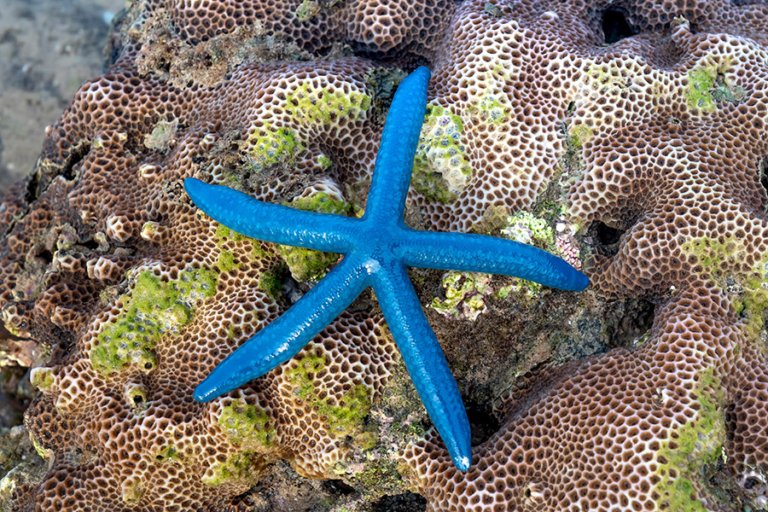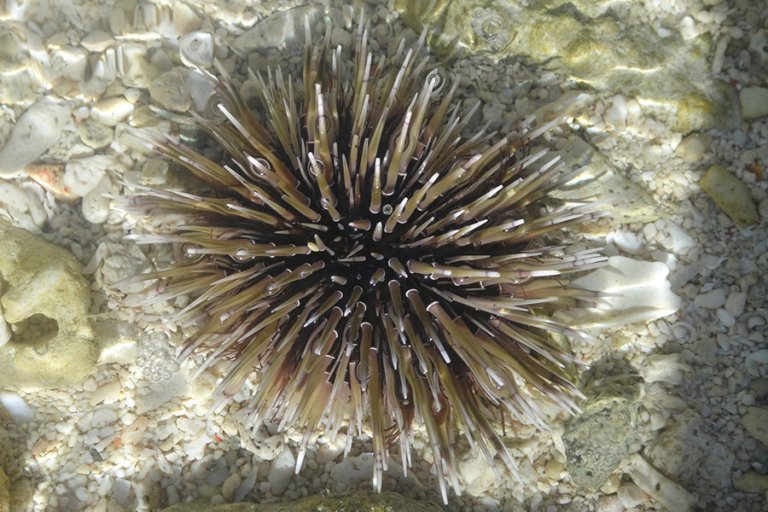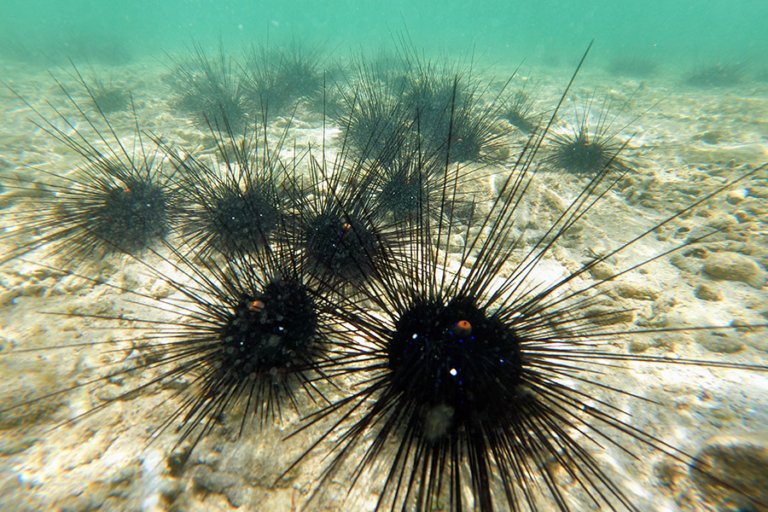
Echinoderms – Types & Characteristics
The oceans teem with a rich diversity of life, but few marine groups capture our imagination like echinoderms. With names derived from the Greek words for “spiny skin,” echinoderms are a unique group of marine animals, known for their captivating shapes and designs, like the intricate patterns of starfish and the elegant movements of sea cucumbers.
Echinoderms are a testament to the wondrous variety of life beneath the waves, with over 7,000 species dotting our oceans, from shallow tide pools to the abyssal depths. Echinoderms are exclusively marine, and while they might not be the largest or the most mobile, they have made significant ecological contributions to marine ecosystems.
From the radiating arms of sea stars to the spiky surface of sea urchins, they are easily recognizable and play essential roles in their habitats as predators, scavengers, and even ecosystem engineers.
7 Characteristics of Echinoderms
Radial Symmetry: Adult echinoderms typically display five-part radial symmetry, meaning their body parts extend outward from the center like spokes on a wheel. This is a significant departure from the bilateral symmetry seen in most other animals.
Water Vascular System: Echinoderms possess a unique water vascular system. This network of fluid-filled canals powers their tube feet, allowing them to move, feed, and exchange gases.
Endoskeleton: Beneath their rough or spiky skin lies an endoskeleton made up of numerous calcareous plates. This provides support and protection.
Regeneration: Many echinoderms have an impressive ability to regenerate lost body parts. Starfish, for instance, can grow back lost arms, and in some cases, an entire new starfish can form from a single detached arm.
Reproduction: Echinoderms can reproduce both sexually and asexually. Sexually, most release eggs and sperm into the water, where fertilization occurs. Some echinoderms can also reproduce asexually by breaking their bodies into pieces and regenerating missing parts.
Diverse Feeding Strategies: Their diet ranges from plankton to decaying matter on the sea floor. Sea stars are known for their predatory habits, often preying on mollusks, while sea urchins primarily graze on algae.
Dermal Gills: These tiny, finger-like projections aid in respiration and waste removal, allowing echinoderms to extract oxygen from water and release waste products.

The 5 Types of Echinoderms
There are around 1,800 recognized species of Echinoderms in our world, and they are organized into 5 different classes. Here they are:

Asteroidea (Sea Stars)
Often the poster creatures for marine wonder, sea stars or starfish boast a classic radial design, typically with five arms emanating from a central disc. But these animals are more than just their looks.
They are voracious predators, using their tube feet to pry open mollusk shells and then extrude their stomachs to digest their prey outside their bodies. This extraordinary feeding method, coupled with their ability to regenerate lost limbs, makes sea stars true marvels of marine adaptation.

Ophiuroidea (Brittle Stars)
At first glance, brittle stars might be mistaken for their sea star cousins, but a closer look reveals notable differences. With long, slender, and highly flexible arms, they move gracefully across the seafloor, almost like dancers of the deep.
Unlike sea stars, brittle stars have a distinct central disc, and their arms, which can break off easily (hence the name “brittle”), can regenerate swiftly. Many brittle stars are detritivores, feeding on decaying matter, while others are suspension feeders, catching tiny particles from the water.

Echinoidea (Sea Urchins and Sand Dollars)
Sea urchins are the spiky denizens of the ocean floor. Covered in long, sharp spines, they are slow-moving grazers, often feeding on algae and leaving patterns on rocks with their scraping mouths.
Sand dollars, their flattened relatives, burrow into sandy substrates and filter tiny particles of food from the water. Both possess an internal structure called Aristotle’s lantern, a complex jaw apparatus used for feeding.

Crinoidea (Sea Lilies and Feather Stars)
Evoking images of underwater gardens, the crinoids, especially sea lilies, are anchored to the seafloor by stalks, waving their feathery arms to capture plankton from the water.
Feather stars, on the other hand, can move around using long, graceful arms, which they also use to capture food. These echinoderms have a history that traces back nearly half a billion years, making them among the oldest echinoderm classes.

Holothuroidea (Sea Cucumbers)
At first, one might wonder how these soft-bodied, elongated creatures are related to spiky sea urchins or starry sea stars. But sea cucumbers are echinoderms through and through.
They play a vital ecological role by processing the sand on the ocean floor and extracting organic matter for nutrition. Many possess fascinating defense mechanisms, such as expelling sticky threads or even their internal organs to deter predators, only to regenerate them later.
Frequently Asked Questions About Echinoderms
What does the term “echinoderm” mean?
“Echinoderm” translates to “spiny skin,” a fitting description given the spiky or rough exteriors seen in many members of this phylum, like sea urchins.
How do echinoderms move?
Echinoderms use a unique water vascular system. This system consists of a network of water-filled canals that work hydraulic tube feet, allowing them to move, feed, and even breathe.
Can echinoderms regenerate their body parts?
Yes, many echinoderms, like sea stars and brittle stars, can regenerate lost arms or even more extensive portions of their body. This ability varies across different species and classes.
Do echinoderms have eyes?
While they don’t have eyes like humans, many echinoderms have eye spots (often called ocelli) on the tips of their arms or body that can detect light and dark.
How do sea urchins protect themselves?
Sea urchins primarily use their sharp spines for protection against predators. Some species also have pincer-like structures called pedicellariae that can grasp or sting potential threats.
Why are some sea cucumbers harvested by humans?
Sea cucumbers are considered a delicacy in many Asian cultures and are harvested for food. They’re also used in traditional medicine and have become a significant component of the marine trade.
Are all echinoderms marine animals?
Yes, all echinoderms are marine species. They can be found in various marine habitats, from tidal zones to the deep sea.
How do echinoderms reproduce?
Many echinoderms reproduce through spawning, where males and females release sperm and eggs into the water. Some species also reproduce asexually or display brooding behaviors.
Do echinoderms have a brain?
Echinoderms don’t have a centralized brain like mammals. Instead, they possess a nerve ring and radial nerves extending into their arms or body segments, coordinating their movements and responses.
Why are echinoderms important to marine ecosystems?
Echinoderms play vital roles in marine ecosystems. They help maintain coral reef health by grazing on algae (like sea urchins), filter the water (feather stars), and process and aerate sediments (sea cucumbers). They also provide food for many marine predators.
Learn More About Echinoderm Species
Links to articles packed with surprising facts and knowledge to further learn about amazing species of Echinoderms, so you know what you are looking at on your next wildlife trip!

